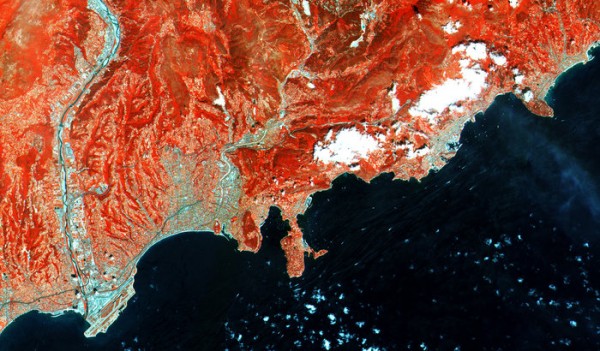By Ana Verayo, | December 05, 2016

This close-up of France’s southern coast from Nice airport (lower left) to Menton (upper right) is a subset from the first image from the Sentinel-2A satellite. (Copernicus data (2015)/ESA)
Despite a lander crashing on Mars in October upon touchdown, the European Space Agency (ESA) will still receive funding from 22 states for another ExoMars rover project in 2020.
Member states of the ESA approved a budget of 10.3 billion euros (US $11 billion) for multiple space projects last week, during a summit in Lucerne, Switzerland.
Like Us on Facebook
According to ESA Director General Jan Wörner, the funding will allow the agency to cover different areas of space exploration.
This not only includes Martian missions but also Earth observation, satellite navigation, and telecommunications, and developing rocket technology. Apart from this, the ESA will receive around 1 billion euros (over $1 billion) to maintain its post at the International Space Station until 2024. The orbiting space lab is currently home to three Russian cosmonauts, two NASA astronauts, and one European astronaut. Other nations that are also part of the ISS are Canada and Japan.
The ESA's ExoMars mission will now proceed to its second phase, as a budget of 440 million euros ($471 million) has been dedicated to seeking potential life on Mars. The space agency has allotted 1.5 billion euros ($1.6 billion) for a joint project with the Russian federal space agency, Roscosmos.
Instead of 2018, the second phase of the ExoMars mission aims to land a rover on the surface of the Red Planet with 2020 as the target launch date.
In October, the ESA's Schiaparelli lander crashed and exploded during touchdown due to a glitch that caused the device to deploy its parachutes prematurely.
Apart from the ExoMars mission, ESA is also gearing up for its Asteroid Impact Mission (AIM) program to explore ways to predict and even deflect an asteroid or a near-Earth object from hitting the planet.
However, Wörner said that the ESA would continue studying and developing asteroid defense via other strategies.
-
Use of Coronavirus Pandemic Drones Raises Privacy Concerns: Drones Spread Fear, Local Officials Say

-
Coronavirus Hampers The Delivery Of Lockheed Martin F-35 Stealth Fighters For 2020

-
Instagram Speeds Up Plans to Add Account Memorialization Feature Due to COVID-19 Deaths

-
NASA: Perseverance Plans to Bring 'Mars Rock' to Earth in 2031

-
600 Dead And 3,000 In The Hospital as Iranians Believed Drinking High-Concentrations of Alcohol Can Cure The Coronavirus

-
600 Dead And 3,000 In The Hospital as Iranians Believed Drinking High-Concentrations of Alcohol Can Cure The Coronavirus

-
COVID-19: Doctors, Nurses Use Virtual Reality to Learn New Skills in Treating Coronavirus Patients







